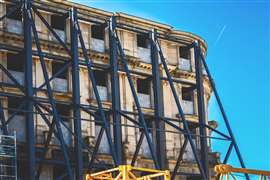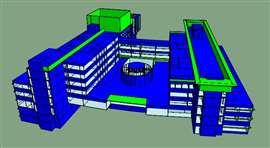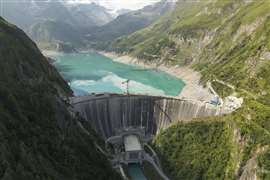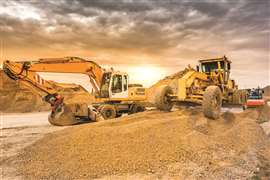Read this article in Français Deutsch Italiano Português Español
Why building design must catch up with climate reality
28 July 2025
 Image courtesy of IES
Image courtesy of IES
Don McLean, CEO of global climate tech firm, IES on why a new report on climate change in the UK demonstrates an urgent need for the construction sector to play its part in cutting emissions.
The latest State of the UK Climate report is yet another stark reminder of the pace of climate change - and the growing urgency for the built environment to play its part in tackling it. The last three years have been among the UK’s five warmest on record, with 2024 officially the fourth warmest year since records began in 1884. Over the past decade, the UK has been around 1.24°C warmer than the 1961–1990 average, and the hottest summer days and coldest winter nights are warming at roughly twice the rate of seasonal averages in some parts of the country. These record-breaking temperatures are no longer rare events; they are fast becoming the norm.
But this is not just a UK story. Climate extremes - from heatwaves and storms to unpredictable weather patterns - are now a global reality. The challenge for the construction industry is equally universal; much of the world’s infrastructure was designed for a climate that no longer exists. Buildings are under increasing pressure from conditions they weren’t originally built to withstand, while energy demand, particularly for cooling in areas where it wasn’t previously required, continues to rise.
In addition to many buildings being ill-equipped for changing conditions, the built environment accounts for 37% of global energy-related emissions. Yet, with regulatory compliance often taking precedence, delivering buildings that consistently perform under real-world conditions remains a challenge. As climate change continues to reshape the environment in which buildings operate, evolving industry approaches will be key to building resilience and achieving long-term sustainability goals.
What needs to change?
What needs to change? First, design processes must move away from static compliance modelling towards dynamic, performance-based analysis that looks at the entire lifecycle of buildings. Every major design decision, from site orientation, façade design, glazing ratios, and ventilation strategy, has a significant impact on energy use, thermal comfort, resilience and even occupant wellbeing. Yet too often, these decisions are made with limited foresight into how a building will actually perform once occupied.
 Don McLean, CEO of IES
Don McLean, CEO of IES
Second, we need to embed building performance modelling from the earliest design stages and carry it through construction, commissioning, and operation. It’s the only reliable way to bridge the so-called ‘performance gap’ - the all-too-common reality of buildings consuming two to five times more energy than predicted.
While there’s growing awareness of the need for change, and many construction firms have good intentions and big goals around decarbonisation and energy performance, in some respects, sadly, the industry is still lagging behind. Standards like the UK Net Zero Carbon Buildings Standard and initiatives such as the RIBA 2030 Climate Challenge have set ambitious targets. But without early-stage performance modelling and a widespread shift in how design teams collaborate from the outset, these targets risk becoming a tick-box exercise rather than a meaningful shift in practice.
Energy modelling shouldn’t be an afterthought
Too many projects still treat energy modelling as a regulatory afterthought - often left until detailed design or post-construction, when the scope for meaningful change is limited. This approach misses the opportunity to optimise designs from the outset and often leads to operational inefficiencies or the need for retrofits further down the line.
A project that demonstrates the value of a performance-led approach is 2 Aldermanbury Square, a major London office development led by GPE. IES performance simulation technology was deployed to model the building’s operational energy use in line with the NABERS UK Design for Performance process - a shift away from compliance-based design towards real-world performance outcomes.
A detailed digital twin was created to assess the impact of architectural and building services decisions, optimising energy use through a façade-first approach and high-efficiency, all-electric HVAC systems. The modelling indicates the building is on track to exceed the requirements for a NABERS UK 5 Stars rating, delivering over 50% energy savings compared to typical UK office buildings. The project shows how early-stage simulation can drive more efficient, resilient buildings, with measurable results.
 Image courtesy of IEL
Image courtesy of IEL
However, significant opportunity also lies in improving the buildings already in existence. With 80% of today’s buildings still expected to be in use by 2050, retrofitting existing stock is a critical piece of the decarbonisation puzzle.
And this can pay off in abundance. For example, at the University of Liverpool, a recent HVAC upgrade, combined with performance modelling and live monitoring, verified a 23% energy reduction in less than a year. For Ireland’s Tifco Hotel Group, detailed energy audits across nine hotels identified a range of retrofit measures capable of cutting energy use by 50% and reducing CO₂ emissions by 43%. In Dublin, whole-life carbon analysis helped the City Council determine that a deep retrofit of vacant housing blocks could deliver up to 85% cumulative CO₂ savings over 60 years.
These projects demonstrate that, guided by robust data and analysis, retrofit can be a practical, effective route to reducing emissions and enhancing performance in existing building stock.
If the construction sector is serious about tackling climate change, it’s critical that the approach to building performance shifts. It must become a core part of every project, informing design decisions, enabling collaboration, and ensuring all buildings meet both climate resilience and decarbonisation goals.
The climate crisis is no longer a distant threat, and meeting the challenge will require collective action across the construction industry. Smarter, data-driven design and retrofit backed by robust, physics-based performance modelling offers a clear path forward. As the risk to assets mounts and the potential for both carbon and financial savings slips away, it’s a shift that the sector cannot afford to delay.
Don McLean is CEO of global climate tech firm, IES
STAY CONNECTED


Receive the information you need when you need it through our world-leading magazines, newsletters and daily briefings.
CONNECT WITH THE TEAM










